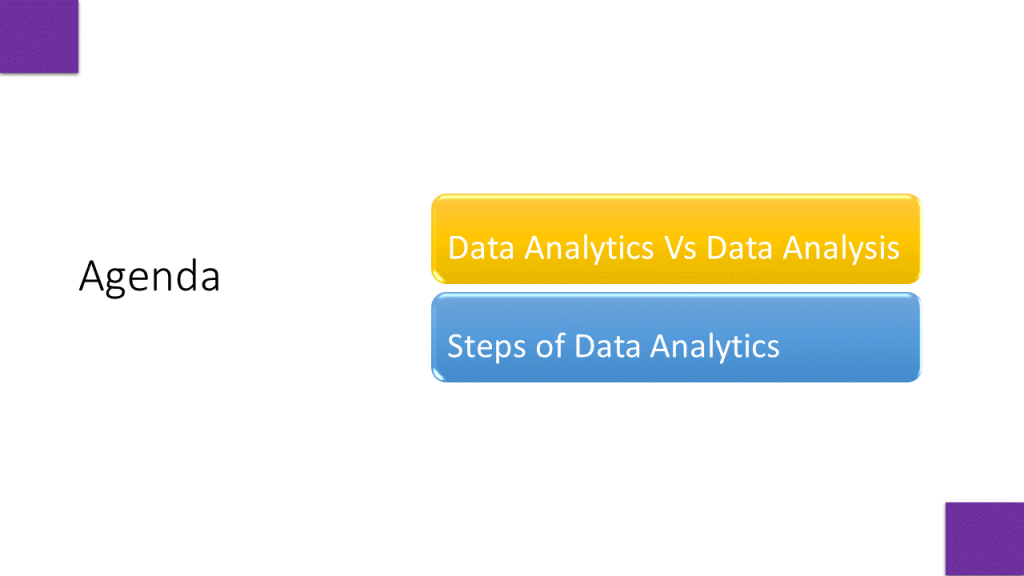
Data analytics is the broad field of using data and tools to make business decisions , whereas Data analysis is a subset of data analytics which refers to specific actions.

Steps of Data Analytics

Problem Understanding
First step is problem understanding, which is most important step to understand a business problem. Some examples can be:
How to improve customer satisfaction?
How to reduce production cost?
In current scenario the most import problem in front of whole world is : How to handle pandemic situation? Data analysis helps in finding out meaningful patterns from the data to take informed decisions.

Data Collection
Second step is data collection, customer data is collected either manually or digitally under this step.

Once data is collected, data analysis is used to find missing values in data, categorical or numerical variables, correlations and other useful information.
Exploratory Data Analysis

Data Visualization
It is the fourth step data is visualised in plots, charts or heatmaps to see and understand trends, outliers, and patterns in data.

Machine Learning Models
After doing data transformations in step 3 and 4, the transformed data is fed to machine learning models , to make proper predictions. These models can be saved easily for reuse.

Predictive Analysis
Predictive analysis uses machine learning models to make prediction on unseen data.

Deployment
Last step is deployment where machine learning models are deployed in a production environment where these models are linked with other systems which receive data automatically and can be accessed using API by


